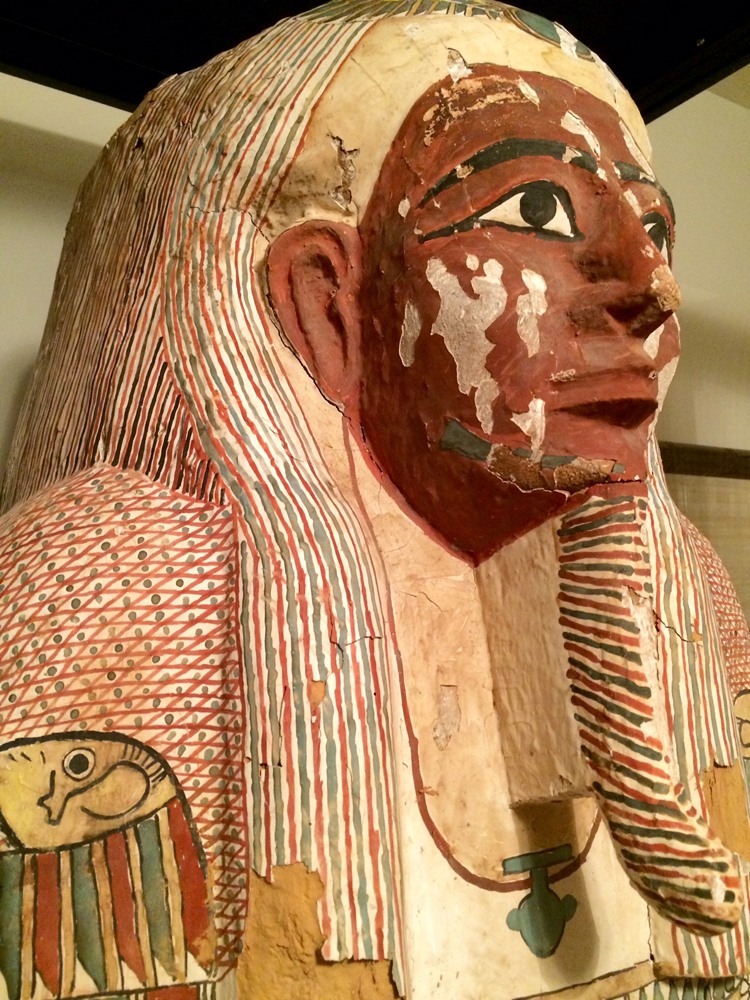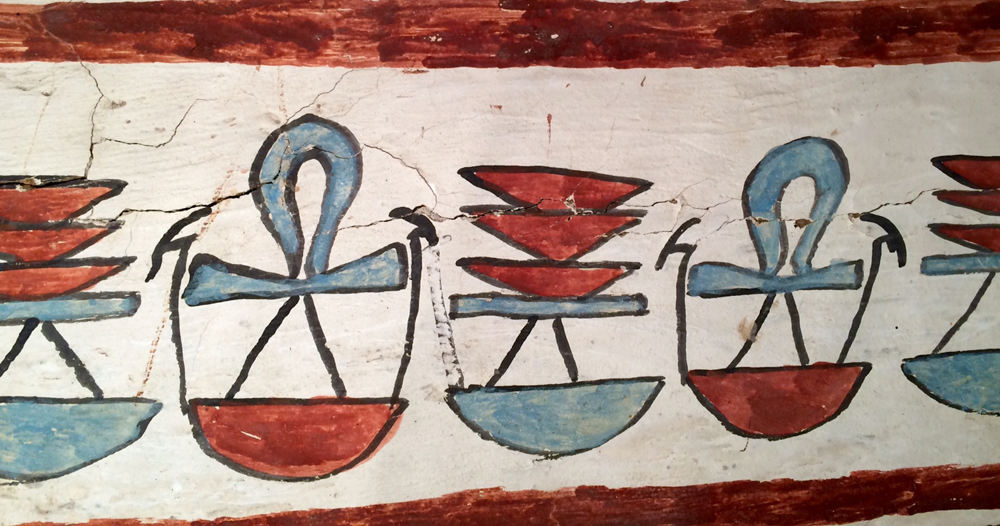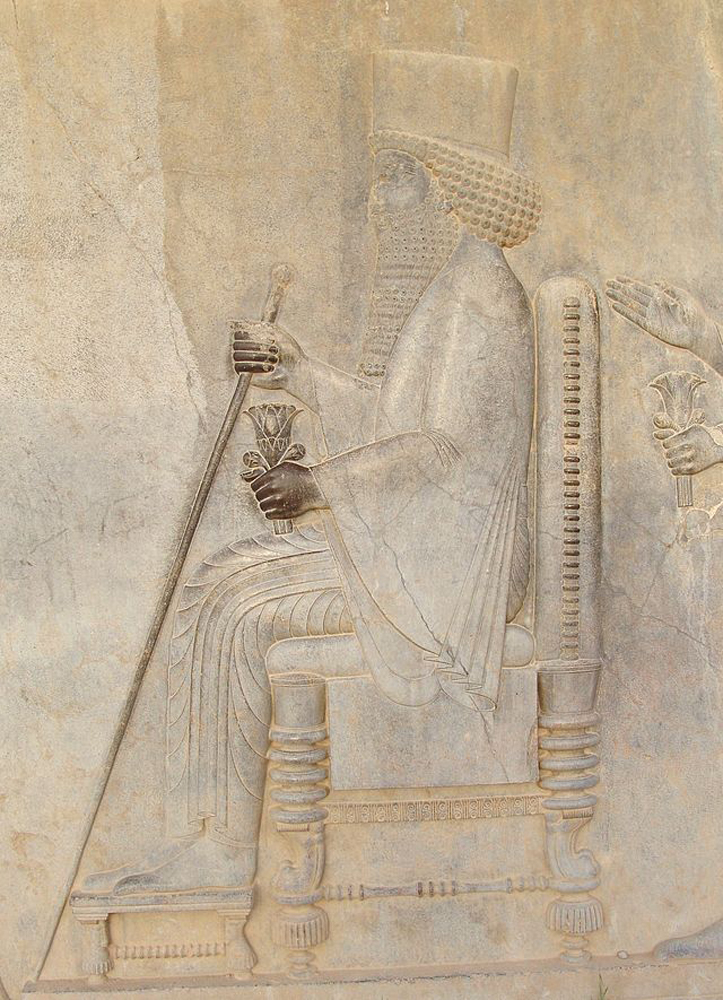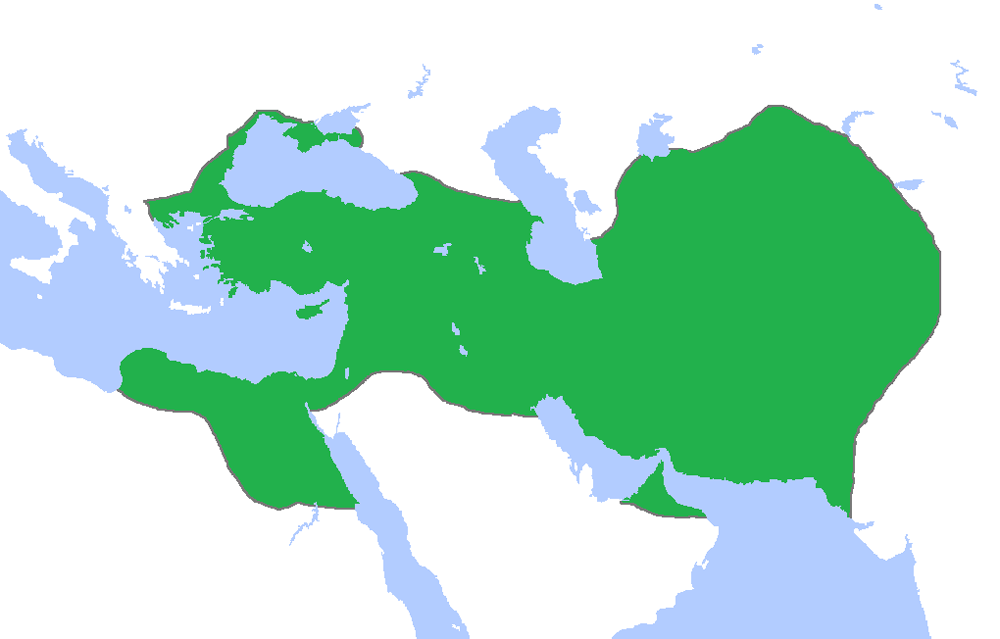In Photos: Ancient Egyptian Coffin with 'Odd' Art
A 2,400-year-old Egyptian coffin with strange decorations offers insights into a tumultuous period of Egyptian history, under the rule of the Persian Empire. The coffin's amateurish and unusual imagery hint at the artist's lack of knowledge, likely because Persian rulers deported many of Egypt's artists. Check out these photos of the coffin and its decorations. [Read full story about the ancient Egyptian coffin]
Unexpected traits
Radiocarbon dating shows that this Egyptian coffin dates back more than 2,400 years, to a time when the Persian Empire controlled Egypt. Inscriptions on the coffin show that it belonged to someone named Denit-ast, or Dent-ast, likely a woman. The coffin contains a number of unusual features, likely a product of the Persian Empire’s deportation of Egyptian artists. (Photo copyright: Mike Sigler)
Oddly made
The full-size coffin. Tests show that the wood is sycamore, a type commonly used in ancient Egypt. Some of the coffin’s unusual features include the imagery on the collar, which is supposed to have two falcons on its upper corners. In this case, the creatures are poorly drawn and look more like fish. The Mehen snake at the bottom of the coffin is also poorly drawn and actually stops and starts at one point, which experts say is strange for imagery of a protective deity. (Photo copyright: Mike Sigler)
A curious design
The funerary scene shown here is remarkably weird, said Gayle Gibson, an Egyptologist and educator at Toronto's Royal Ontario Museum. The deceased is shown on a funerary bed which has a bird with a human head (called a Ba). A flying snake wearing the crown of Hathor (an Egyptian goddess) is shown above the deceased. The four jars are supposed to represent the four sons of Horus, but they have a "goofy" appearance, Gibson said. For instance, Gibson said she has never seen a funerary bed with a Ba head before and the flying snake is also "very odd." (Photo copyright: Mike Sigler)
Get the world’s most fascinating discoveries delivered straight to your inbox.
Correcting a mistake
The coffin is owned by Mike Sigler, a collector and Egyptian antiquities enthusiast. He purchased it in 2013 from the Edgar L. Owen gallery, which sold it on behalf of a private collector. Sigler contacted Gayle Gibson and asked for her help in researching the coffin’s oddities. In this image, the ancient artist tried to correct a mistake in an alternating pattern by scratching out an image of a scepter. (Photo copyright: Mike Sigler)
Answers
Gibson and Sigler's research got a boost when radiocarbon dating pinpointed the coffin’s date to the period of Persian rule. During this time Egyptian artists were deported to work on building projects in Persia. This meant there were few good artists at home and training in the field suffered. This image shows a carving of Persian King Darius I at Persepolis. (Image courtesy Wikimedia commons, user TRAJAN 117, CC Attribution-ShareAlike 3.0 Unported.)
The find
The Persian Empire conquered Egypt in 525 B.C., and controlled a vast amount of territory stretching from Egypt to modern-day Afghanistan. The Persian Empire ruled Egypt for more than a century. (Image courtesy Wikimedia Commons, user HistoryofIran, Attribution 3.0 Unported.)
Follow Live Science @livescience, Facebook & Google+.

Owen Jarus is a regular contributor to Live Science who writes about archaeology and humans' past. He has also written for The Independent (UK), The Canadian Press (CP) and The Associated Press (AP), among others. Owen has a bachelor of arts degree from the University of Toronto and a journalism degree from Ryerson University.








